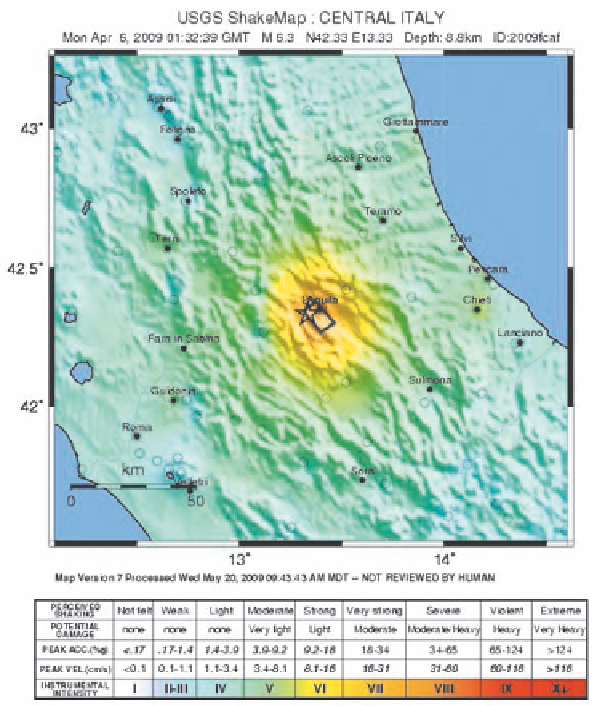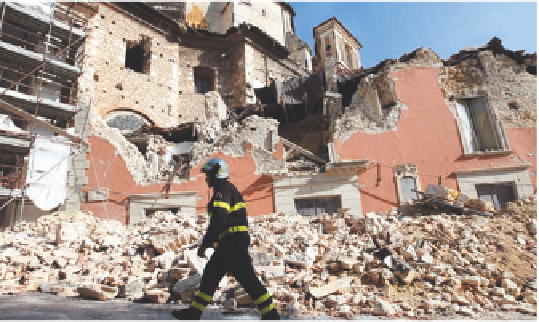Geoscience Reference
In-Depth Information
D I S C O V E R . . .
EarthquakE prEdiction
and thE lEgal systEm in italy
One of the primary goals of seismologists is one day to be
able to predict when an earthquake is about to happen. So
far, however, the ability to make that kind of warning about
forthcoming seismic activity is beyond the reach of geolo-
gists. Instead, they think about the probability that an earth-
quake of a certain magnitude will occur in a certain place
within some future interval of time (see Figure 13.26). In
spite of this limitation, it is nevertheless important that sci-
entific understandings about earthquakes as natural haz-
ards be effectively communicated so that people can plan
accordingly.
The tension between predicting when an earthquake
might occur and the communication of scientific information
was illustrated in 2009 in Italy. In April of that year, a mag-
nitude 5.8 earthquake struck L'Aquila, which is in the cen-
tral part of the country. The earthquake damaged over 5000
buildings, killed about 300 people, and left about 40,000
people homeless. In addition to this tragic loss of human life
and resulting chaos, the aftermath of the earthquake was
particularly noteworthy because seven members of the
Ital-
ian National Commission for the Forecast and Prevention of
Major Risks
were criminally accused of not providing ad-
equate warning before the event occurred.
The case against the commission members revolved
around the seismic activity that occurred before the major
event and the way that the potential risk was described to
the community. A month before the earthquake a laboratory
technician had measured elevated levels of radon in the area
and had thus publicly predicted that a major seismic event
would soon occur. Although some scientists believe a link
may exist between radon levels and earthquakes, no corre-
lation has been scientifically verified. As a result, the director
of the commission accused the technician of being alarmist
and inciting fear. A few days before the earthquake, a series
of tremors occurred, including a pair of strong shocks the
day before. After these events, commission members es-
sentially said that there was no cause for concern, although
some acknowledged a major earthquake could occur at
some undetermined time in the future.
Given the consensus that earthquakes cannot be cur-
rently predicted, it was believed that the commission mem-
bers would be acquitted. Instead, each of the defendants
Shake map of the L'Aquila earthquake in central Italy. The earth-
quake occurred at a depth of 9.46 km (5.9 mi) and was about
90 km (60 mi) northeast of Rome.
Earthquake damage to the local government office in L'Aquila.
Over 5000 buildings were similarly damaged, and about 300 peo-
ple were killed, making it the worst earthquake in Italy since 1980.






